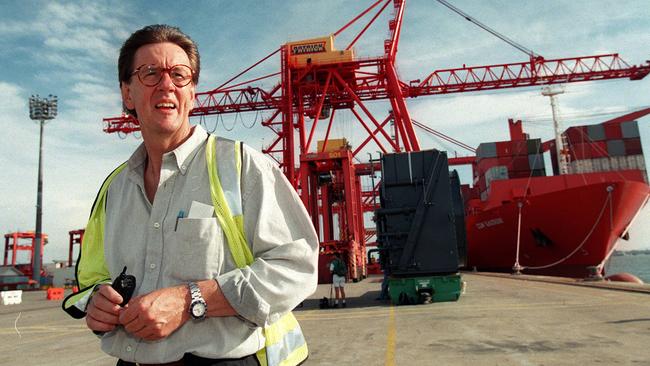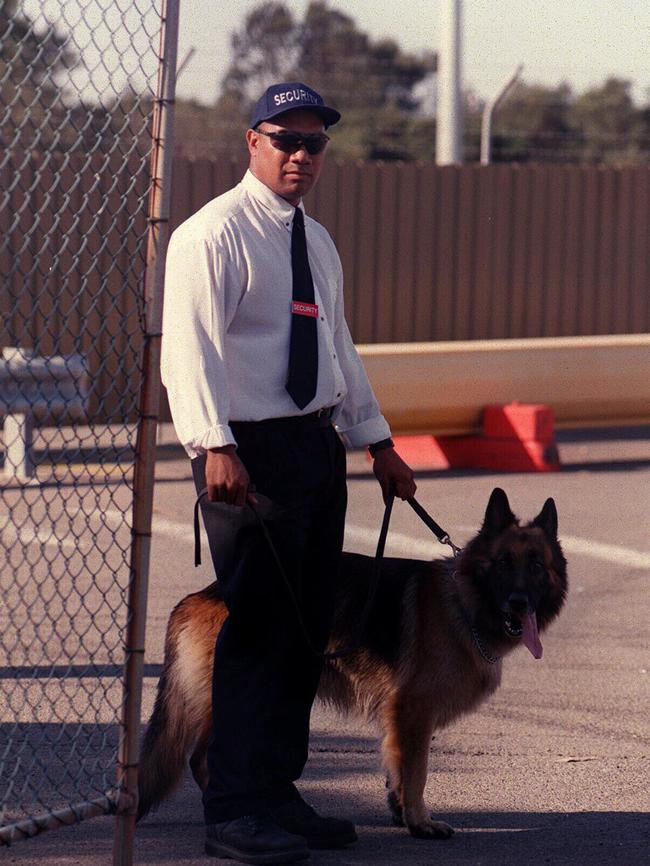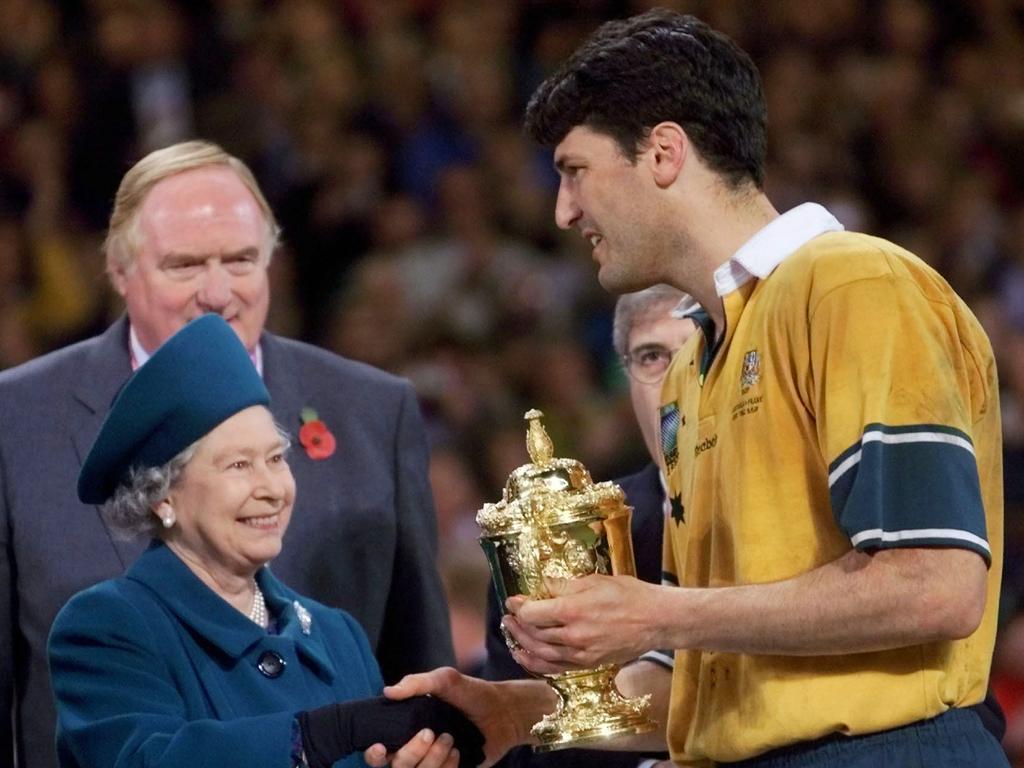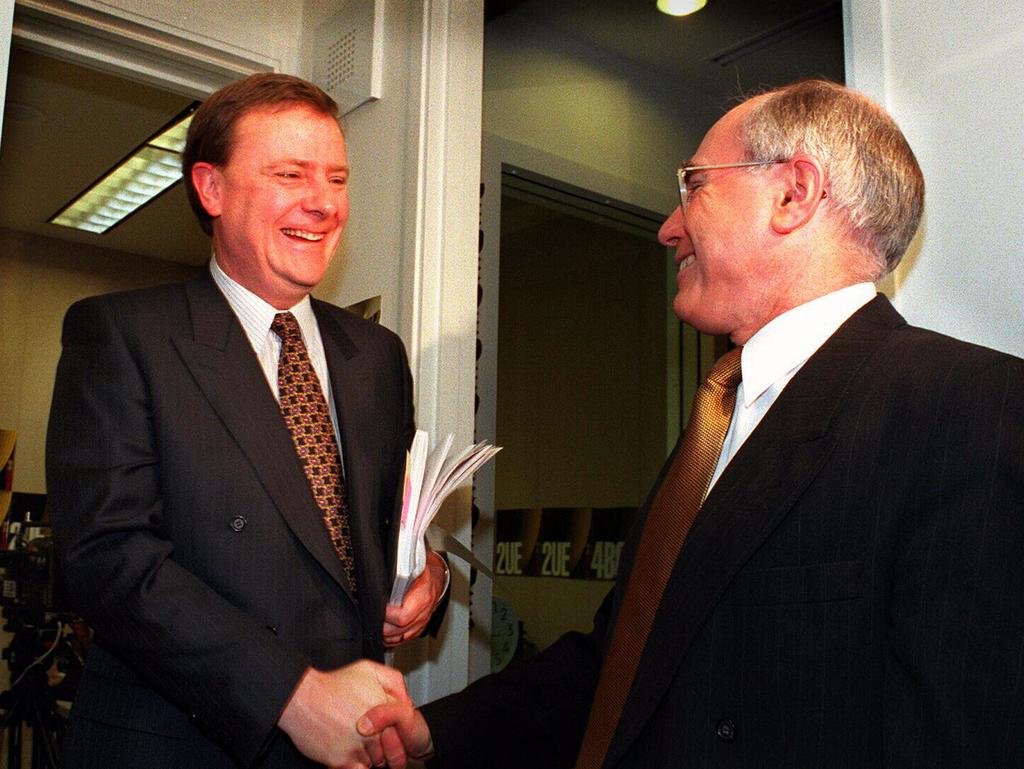Cabinet papers 1998-99: Chris Corrigan waterfront dispute a striking omission
There is no mention of Chris Corrigan’s 1998 assault on wharfies in the newly released documents.

The absence of any mention of the 1998 waterfront dispute in the newly released cabinet records is a striking “omission”, potentially reflecting the Howard Government’s desire to operate on a “need to know” basis about Chris Corrigian’s assault on wharfies.
The Howard cabinet in December 1997 authorised the advance of taxpayer funds to Mr Corrigan to finance his mass sackings of 1400 union employees, plunging the country into a polarising confrontation on the wharves.
Seven weeks after the funds became available in February, 1998, waves of security guards, some in balaclavas and accompanied by dogs, swarmed across Patrick terminals just before 11pm locking out union employees.

Cabinet historian Paul Strangio said the Howard Government was on the political offensive in 1998 and its “audacity” was reflected in the Coalition’s support for the brinkmanship tactics of Patrick in challenging the power of the maritime union.
“It’s obviously a very significant event in politics of 1998 and the first term of the Howard Government so the fact that the actual dispute isn’t mentioned in these records is quite striking,” he told The Australian.
“There are some different possible explanations for that. One is once
the dispute itself blew up in the autumn of 1998, there was an issue of urgency so it wasn’t dealt with in the Cabinet.
“Whatever considerations the government was giving, it was done outside the bounds of cabinet because of the pressing urgent nature of events.
“Secondly, there are records and they haven’t been included in this particular release.”
When “interpreting the silence of these cabinet papers on the actual dispute”, Strangio said it was also “well documented now that the government operated on a need to know basis about the strategy and
intent and tactics of Corrigan”.
Federal cabinet had already devised a secret master plan in July 1997 involving the mass sacking of union workers on the waterfront and their replacement with non-union labour.
In a letter to workplace relations minister Peter Reith 12 months before the Patrick lockout, John Howard signed off on an “interventionist” strategy. The duo subsequently met Mr Corrigan in
late 1997.
“We hoped that Corrigan had the commitment and the plan to implement
reform and we provided the framework if he was so disposed to do it, but we were not plotting it, hand in glove,” Mr Howard told The Australian in an interview to mark the dispute’s 20th anniversary in 2018.
“Obviously, the willingness to advance the funding for redundancies was part of it. You had to do that. “Otherwise, why would he be the least bit serious given that other governments before us had caved in
when something like this had arisen?”
Mr Corrigan initially denied knowledge of the Dubai operation before admitting his involvement in February 1998. In a 2018 interview with The Australian, he admitted he told the government in 1997 about his
plan to remove the unionised workforce and bring in non-union contract labour.
“We had to tell them we had a plan to remove the workforce in certain
circumstances,” he said.
“There were certain circumstances in which we could declare the companies that employed these people bankrupt, and that’s what we did.”
Mr Corrigan said Mr Howard had been elected in 1996 on a platform of
“industrial reform”.
“(Howard) had identified the waterfront as an area of reform. So it was after that we went to see the government and said, ‘We agree with you about the opportunities here and the need for change, and here’s how we would go about it’, and they started to
think about that,’’ he said.
“I wouldn’t say they endorsed it but they certainly respected the fact that we had a point of view.”
On the night of the April lockout, Mr Reith released a statement almost simultaneously with the Patrick announcement, called a late-night press conference and had redundancy legislation ready to be submitted to parliament the next day.








To join the conversation, please log in. Don't have an account? Register
Join the conversation, you are commenting as Logout